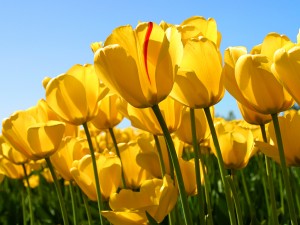 Who says that gardening starts to wind down in the fall? Probably not a gardener. Fall is a great time to start getting your yard ready for spring again. Yes, Halloween isn’t even here and plans are being laid for spring. But planting in the fall will help roots become established, keep your plants from being shocked by a cold weather snap and help your plants get a healthy head start in the spring.
Who says that gardening starts to wind down in the fall? Probably not a gardener. Fall is a great time to start getting your yard ready for spring again. Yes, Halloween isn’t even here and plans are being laid for spring. But planting in the fall will help roots become established, keep your plants from being shocked by a cold weather snap and help your plants get a healthy head start in the spring.
With all the new plans being laid in the fall, it is helpful to have a classical garden marker for each of your new plants or new arrangements. Some of your new plantings or transplants may surprise you in the spring because you may have forgotten what you did in the fall. A classical garden marker placed with the new arrangement will help you anticipate all those lovely new changes. All winter you can imagine how your new organization will have transformed your yard for the better.
There are many perks to planting in the fall rather than waiting for spring. At the end of summer, the soil is still warm from the weeks of sunny warmth. No roots will suffer from being too cold during the move. And if you plant early enough in the fall you don’t have to worry about one of those bizarre late April ice storms that will freeze the tips of fragile plants or shock them with frigid weather.
In the fall you don’t need to add fertilizer to your plants as most gardeners suggest you do in the spring. In fact, it’s recommended that you don’t use fertilizer in the fall. Fertilizer is used to help assist young plants in getting a quick head start in the spring growing season. Fertilizer will speed up the budding of young plants so that they send out tender new shoots. In fall, those tender shoots will be heading into late fall frosts that will burn those tips away.
Fall is the perfect time to plant everything from bulbs, perennials, trees, grass and vegetables. Fall is bulb-planting season. Bulbs are often the first signs of spring. Crocus, daffodils and others will fill yards with shades of purple, yellow and white. Bulbs need the cold weather in order to properly bloom in the spring. A good cold winter will get them ready for their glory in warmer months.
Don’t be hesitant to buy a new perennial for your yard at a nursery’s plant clearance sale in September. Most perennials can move around the yard at any time of year, but putting them in the ground in the fall means that their roots can become established and they can be bigger and stronger in the spring during their first bloom.
A classical garden marker like the ones we produce at Kincaid Plant Markers will help you remember this spring where to look for your new garden additions and help you find the new address of those that just moved around a bush or down the garden path.

Custom Markers for Plants Can Identify the Beautiful Fragrances in Your Southern Garden | Kincaid Plant Markers
[…] enhance your whole neighborhood when the breeze lifts that fragrance right over your fence. With custom markers for plants the neighbors can crane their neck over your fence and identify that lovely […]
A Classical Garden Marker Adapts to Any Garden in the Country | Kincaid Plant Markers
[…] or wet marshes, a classical garden marker can draw attention to their beauty. A stainless steel classical garden marker will withstand Minnesota snows and Louisiana moisture. Plant markers will mark the spot where the […]